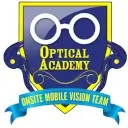The topic of vision and eye health can be quite complex, with myriad conditions, measurements, and factors to consider. One term that often arises in this context is 20/13 vision. This article will delve into this concept, providing a thorough understanding of what it means, how it fits into the broader context of eye health, and why it matters.

1. Vision Basics
Before we delve into the specifics of 20/13 vision, it’s crucial to understand the fundamentals of vision. Each individual’s vision is unique, with variations driven by diverse factors such as genetics, age, lifestyle, and health conditions.
However, some common visual conditions affect a significant portion of the population. These include nearsightedness (myopia), farsightedness (hyperopia), and astigmatism.
2. Understanding Visual Acuity
The term visual acuity refers to the clarity of one’s vision. It’s typically assessed using a Snellen chart during an eye exam. The Snellen chart presents rows of letters that decrease in size as one moves down the chart. The smallest letters you can read accurately give a measure of your visual acuity.
3. Interpreting 20/13 Vision
So, what exactly does 20/13 vision mean? The first number, 20, refers to the distance (in feet) at which you are viewing the object. The second number, 13, represents the distance at which a person with normal vision could see the same object clearly.
In other words, if you have 20/13 vision, you can discern details from 20 feet away that the average person could only see clearly from 13 feet away.
4. Other Common Visual Acuity Measurements
While 20/13 vision signifies better-than-average visual acuity, there are numerous other measurements you might encounter. For instance:
20/20 vision is considered normal visual acuity. If you have 20/20 vision, you can see clearly at 20 feet what should normally be seen at that distance.
20/100 vision means that you must be as close as 20 feet to see what a person with normal vision can see at 100 feet.
20/200 vision is a level of visual acuity that the law typically defines as legally blind.
5. When to Get a Vision Test
Regular vision tests are essential to maintaining optimal eye health. Children should start undergoing vision tests as soon as they can cooperate with a Snellen chart. It’s particularly important to monitor children’s vision closely since some may begin to lose their 20/20 vision around the ages of 7 to 10.
For adults, it’s advisable to schedule regular eye exams, especially if you’re experiencing any vision problems.
6. Common Eye Conditions
Several eye conditions can affect your visual acuity, including:
Nearsightedness (Myopia): This condition makes it difficult to see objects at a distance clearly.
Farsightedness (Hyperopia): People with this condition have trouble seeing close objects clearly.
Astigmatism: This condition, involving an imperfection in the curvature of the cornea or lens, can cause difficulty seeing objects at both close and far ranges.
Cataracts: This condition, which clouds the lens of the eye, can cause double vision, halos around lights, and trouble seeing at night.
Presbyopia: This age-related condition results in a loss of the ability to focus on nearby objects.
Glaucoma: This condition, caused by abnormally high pressure in the eye, can damage the optic nerve and lead to blindness.
7. Importance of Comprehensive Eye Exams
Regular, comprehensive eye exams can help detect these conditions early, often before they cause noticeable symptoms. These exams can measure various aspects of eye health and visual acuity, including color blindness, peripheral vision, and focusing ability.
8. Mobile Eye Care
In line with our commitment to accessibility and convenience, we offer mobile eye care services. Our mobile vision team can come to your location, providing comprehensive eye exams in the comfort of your own space.
To learn more or schedule an appointment, call us at 1-800-530-2730 or email us at info@optical-academy.com.
9. Conclusion
Understanding your visual acuity, including what it means to have 20/13 vision, is an important part of maintaining your overall eye health. However, remember that visual acuity is just one aspect of eye health — regular, comprehensive eye exams are crucial for detecting and treating any potential eye conditions early.


Worksite
All Employees Served With Direct Vision Care All In One Day At Their Worksite!.
Glasses2Classes
Vision screenings, eye exams, and eyewear for all students at their schools!
Community Events
Provide Easy Access To Eye Care & Eyewear for Your Entire Community!
At Home
Skip the trip! We travel directly to all fragile homebound patients!